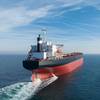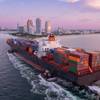UK Club Tackles Tanker Cargo Claims
A new publication from the UK P&I Club focuses on one of the major sources of cargo-related claims in the tanker sector: cargo contamination.
The Club stresses that loading and discharging of a cargo is a joint operation between the crew of the tanker and the terminal staff. Therefore it is essential that the Chief Officer should strive to establish a good working relationship with the key terminal personnel so as to reduce the risk of subsequent problems. Contamination, for example, can occur both on board the vessel and in the lines and tanks ashore. The “Tanker Contamination Claims Checklist” identifies the main causes of cargo contamination arising from both on board and shoreside and compiles the key points to consider in seven sections running from the pre-loading phase through to discharge and sampling.
The checklist begins by considering whether the ship is suitable for the cargo(es) to be loaded. Points to be considered include:
• Can the different grades of cargo be arranged to maintain the degree of separation required? (All chemicals must be separated by positive segregation.)
• Can the ship maintain the required cargo carriage and discharge temperature(s)?
• Is the tank coating suitable for the nominated cargo? (Some cargoes can permanently damage certain coatings, others make coatings soft for a while, during which time the range of cargoes they can tolerate is restricted.)
• If applicable, is the cargo tank coating in good condition?
• Have the cargo tanks and lines been suitably prepared to load the nominated cargo(es)? If applicable, have previous cargo vapours been reduced to less than 2% by volume so that potential flashpoint contamination of nominated cargoes is eliminated?
• With reference to the quality of multiple oil products loaded, can two-valve segregation on the liquid side be maintained throughout the voyage? (Again, chemicals must be carried under positive segregation.)
• Can the vapour side of each oil product parcel (inert gas and vapour relief systems) be segregated throughout the entire voyage?
Thorough checks also need to be taken when preparing the cargo plan and checking the systems. Preparing the cargo plan is primarily concerned with avoiding contamination in tanks, pipelines, pumps and valves and includes issues created by vapours and heat sources. Checking systems is ensuring that tanks and pipelines are clean, noting that with some cargoes, even water can be a contaminant, ensuring that coatings are sound and fit for purpose, and testing gaskets and glands for leaks. The importance of regular maintenance and the training of crew so that it is done correctly and safely cannot be understated. Naturally, the Club also reminds crews that it is essential to ensure beforehand that enclosed spaces are safe to enter; awareness of this risk is now high but still it is a major cause of deaths at sea.
The Tanker Contamination Claims Checklist then deals with discharge and loading, and especially with the relationship between ship and terminal to ensure that both parties fully understand each other in terms of procedures covering not only normal operations but also emergencies. A section entitled ‘Working with the cargo inspector’ is highly detailed with regard to the process of taking and keeping samples and this theme continues in a section entitled ‘General Comments, which commences with the Club noting that a leading firm of cargo surveyors had reported that approximately 40 per cent of alleged shipboard contamination problems are, on investigation, found to be shore related. When defending cargo contamination claims, often samples are the only hard evidence that the shipowner can present. Ensuring good practice when taking and keeping samples might not sound a big deal to the officer involved but if things go wrong, large sums of money can depend on the contents of those little bottles.
The checklist complements the Club’s “Tanker Matters” video published previously, which reviews the most frequent causes of tanker cargo claims and how to avoid them.












